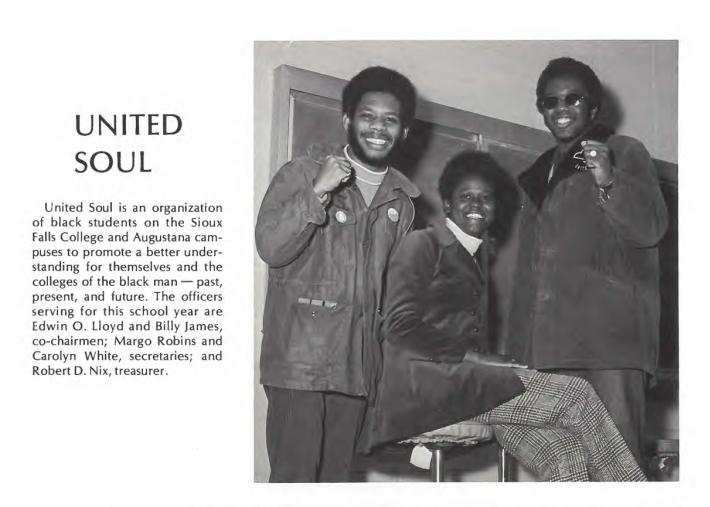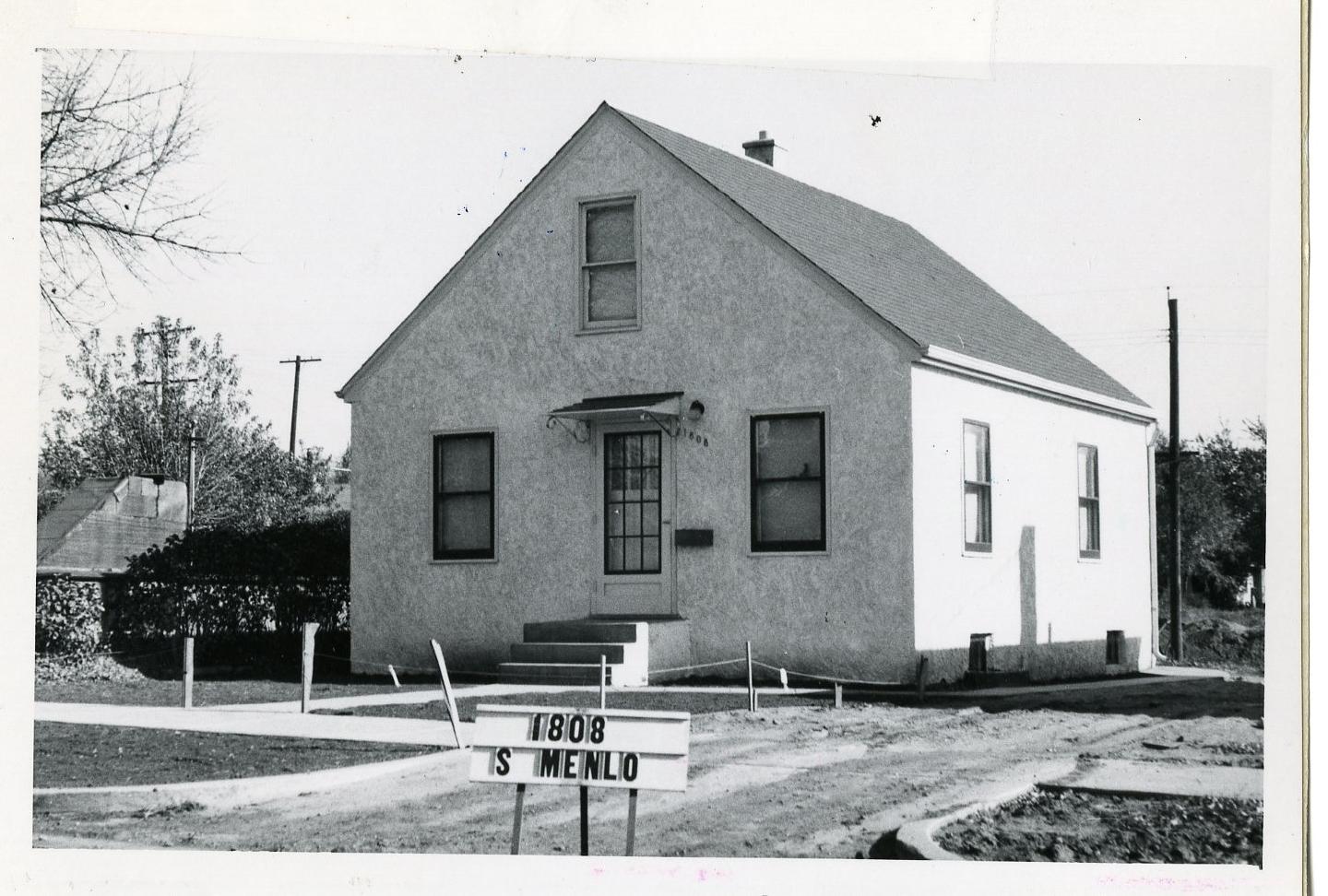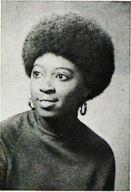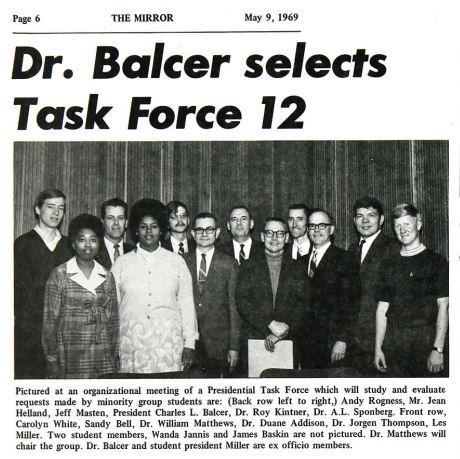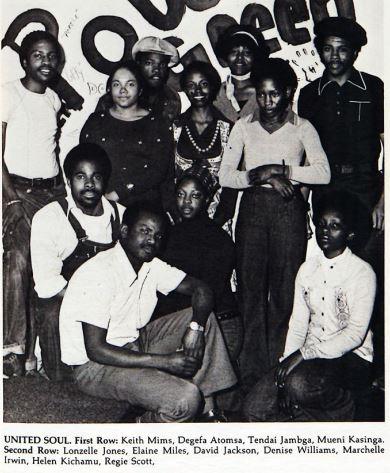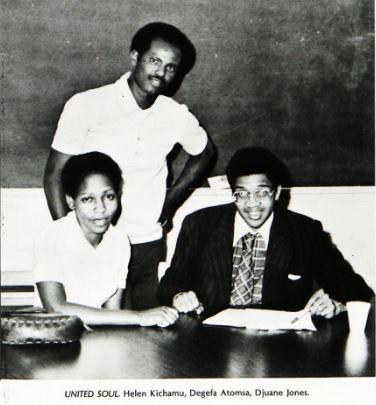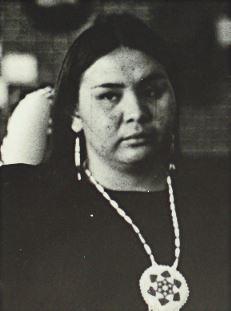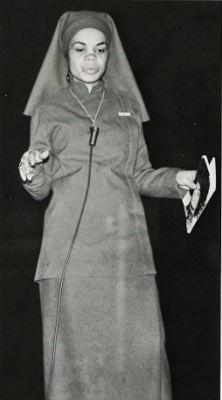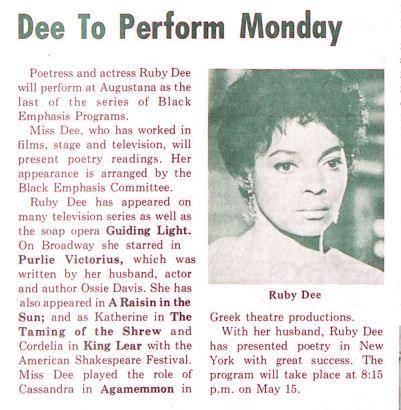United Soul and the Black Campus Movement at Augustana College and Sioux Falls College
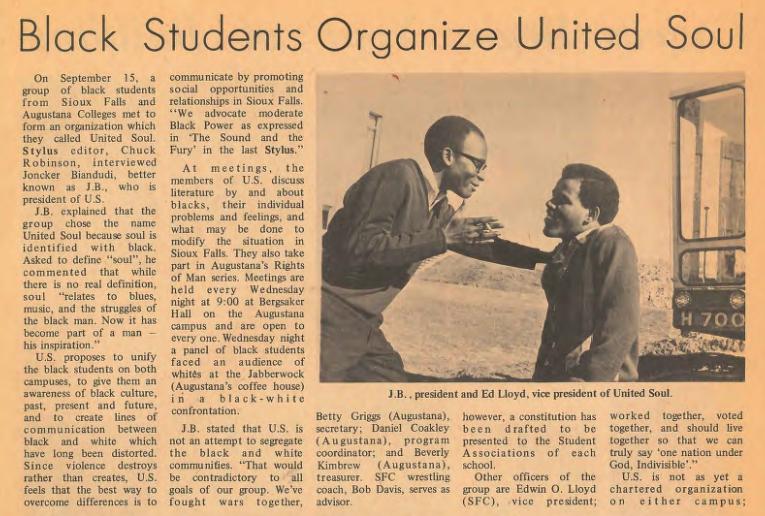
The stories of the Black Campus Movement at rural, liberal arts colleges have largely gone untold. In Sioux Falls, South Dakota, during the late 1960s and early 1970s, United Soul brought together African American students at Augustana College and Sioux Falls College to advance a vision of equal education.
In November 1969, United Soul members attended an Augustana Board of Regents meeting to present their demands for equal education for the second time. One member, John Barnett of Chicago, Illinois, wrote in the student newspaper: “You say, ‘Go to college, get an education,’ however, what you really mean is become white, because the education we get is not relevant to our cultures.” Barnett sported a Dashiki shirt, a colorful garment symbolizing his African roots, at the meeting while fellow students, Sande Bell of Des Moines, Iowa, and Carolyn White of Sioux Falls, South Dakota, wore Afro hairstyles as empowering symbols of Black pride. When United Soul representatives approached Augustana president, Dr. Charles Balcer, and alumni regents, Barnett dropped a brick onto the mahogany boardroom table to ensure their attention. Barnett, Bell, and White then gave United Soul’s demands.
Cultivated by youth raised during the Civil Rights Movement, African American undergraduates at Augustana College and Sioux Falls College (SFC) created United Soul, a student organization that sought to transform both campuses. As part of the Black Campus Movement, United Soul enjoyed mixed success in trying to make student recruitment, college staffing, and curriculum more representative of African American and Indigenous cultures.
The upbringing of Carolyn White, a history and political science major at Augustana, and her younger sister Phyllis White, a business and accounting major at SFC, was framed by civil rights. Their father, Alfred White, Sr. was born in Mississippi and, as part of the “Great Migration,” left the Jim Crow South for Sioux Falls, believing a small Midwestern town was a better place to raise a family. Carolyn and Phyllis, like their United Soul peers, grew up at the height of the Civil Rights and Black Power Movements. In 1954, the Brown v. Board of Education decision gave hope that equal funding would follow the racial integration of schools; however, the assassination of Dr. Rev. Martin Luther King, Jr. in 1968, when Carolyn was twenty years old, brought forth a new wave of social activism.
The Black Campus Movement formed at colleges across the United States under many names, and while focused on solidarity and love, wished to revolutionize higher education. On September 15, 1968, United Soul was established to unify students across Augustana and SFC and create open dialogue surrounding Black culture and pride. “United” referred to the two student bodies coming together while “Soul” was a nod towards soul music, a genre fusing gospel, jazz, and rhythm and blues the founders believed identified with being Black.
Situated between both campuses, as well as the childhood home of Carolyn and Phyllis White, 1808 S. Menlo Ave. served as the meeting place for the organization. There, United Soul put together a play entitled I’m Dreaming of a White Christmas that they performed at Augustana and SFC to display Black culture and traditions. United Soul also produced an underground newspaper, where they were able to reprint work of Black intellectuals, like that of W.E.B. Du Bois, and share African American viewpoints with their White peers. Yet, the students of United Soul wished for more, and pulling from Black Campus Movements that were taking place across the country, in March 1969, United Soul presented seven demands to their respective administrations. These demands were supported by Lakota student Wanda Janis and other Indigenous undergraduates, who also felt undervalued.
In response, Augustana created a task force to examine areas for improvement and United Soul held several meetings with the SFC president. However, meaningful changes were slow to materialize, and many students saw a lack of sincerity. Margo Robins wrote in the Sioux Falls College Stylus multiple times, updating students about United Soul, but also telling of the “hopeless despair” felt as they “knew damn good and well that no changes had taken place.” Others saw an incapability which led them to transfer to other schools. John Barnett, in the Mirror newspaper, wrote “I leave Augustana not a defeated Black radical, but as living proof of Augustana’s willful ignorance in dealing with racial problems.”
While some students were disappointed, others like Sande Bell felt heard in their requests. In 1971, Augustana began offering an African American-centered program of study, and formalized a Minority Studies minor three years later with courses like Readings in the Black Experience, Contemporary Black Movements, and Theology of Nonviolence and the Impact of Dr. King. The creation of a Minority Studies minor at Augustana reflected a larger trend across the United States in which universities added Black/Africana studies to their curriculum during the late 1960s and early 1970s due to student activism. Additionally, United Soul brought many guest speakers to celebrate Black creativity, such as poet Sonia Sanchez, actress Ruby Dee, and sculptor Oliver LaGrone. Augustana and SFC also collaborated in March 1971 on “Soul Days,” a week dedicated to celebrating Black pride. Today, both Augustana University and University of Sioux Falls have Black Student Unions dedicated to supporting their Black student populations, as well as working to uplift African American culture across their campuses.Images

